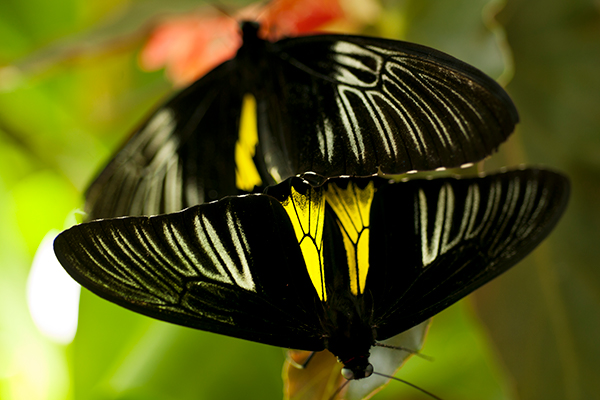
Full Text:
To gather all available data on when butterflies and moths are active, eight scientists rented an Airbnb house for a weekend, opened a shared Google document, divided up Lepidoptera -- an order of insects which includes butterflies and moths -- lineages and started digging through two centuries' worth of scientific literature.
The study predicts an estimated 75 to 85 percent of Lepidoptera are nocturnal and about 15 to 25 percent are active during the day. Day-flying butterflies and moths often have colorful wings, like these birdwing butterflies, Troides helena. Brighter environments allow them to use colors as visual cues to ward off predators or attract mates.Image credit: Kristen Grace/Florida Museum of Natural History